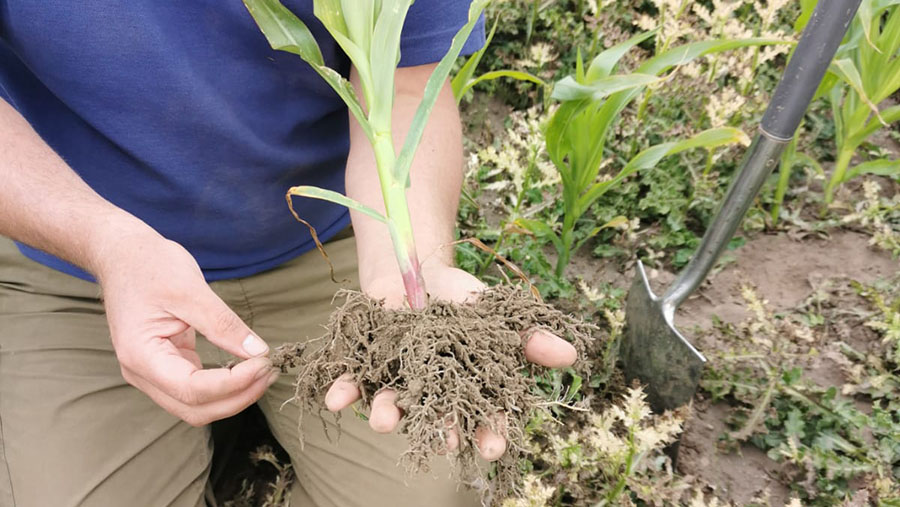Advertiser content
How to make the most of inputs in spring crops
Provided by
Timac Agro has been supporting farmers to protect and improve soil health for over 60 years. Initially specialising in soil conditioners, Timac’s product and service range has evolved to include fertilisers, biostimulants, and animal health products. Supported by a proven product portfolio, there is a nation-wide team of experts to give advice to farmers to help enterprises transition to more sustainable farm practices.
The first two weeks of crop growth can have the biggest impact on overall yield.
Whether planting spring cereal crops, maize or grass reseeding, preparation is key to reap the rewards later in the year.
Timac Agro UK technical manager, David Newton, says there are three areas to prioritise between now and drilling to get crops off to the best start, and make the most of your inputs.
Soil test
Firstly, if you haven’t done so in the past three years, get your soils tested to understand what condition they’re in as well as their current nutrition reserves.
To supply the crop efficiently, you need to know what you’re dealing with.
Look at the macronutrients – phosphorus, potassium and sulphur – as well as micronutrients including magnesium, manganese and boron.
Of equal importance is measuring organic matter levels, as this, along with P,K will give you an idea of your soil fertility.
While taking samples for a soil test, grab a spade and look at the wider soil structure and ask yourself the following questions:
- Is there a high worm population (more than 10 per spade full)?
- Is the soil consolidated or aerated?
- What does the structure look like?
This will help identify how alive your soil is, if there’s compaction issues and what seedbed preparation will be needed to allow crops to establish successfully.
Know your pH
Soil pH is key to nutrient availability and soil biology activity throughout the season. If you have an acidic soil, review at the time of your liming regime.
Autumn lime applications are great, but if the pH is 6 or even pH 5, soils will need added buffering support in early spring ahead of planting for full nutrient availability.
Incorporating a soil conditioner, such as Physiolith can help with buffering the impact of the acidity of the soil.
Soil conditioners improve the soil’s physical qualities, such as its fertility and nutrient availability, as well as helping with crop root structure.
The included biostimulant assists in stimulating germination, root growth and nutrient uptake, so the plant emerges more evenly with greater vigour.
Supply the crop when it needs it
Application timing is key. Crops need to be supplied with the right nutrition, at the right time, in the right amount. This means considering the form in which the nutrition is applied and available to the plant.
For example, early applied, highly available water-soluble phosphate, will deliver a rapid release of nutrition at a time where the crop can’t use it, as it’s still young.
This runs the risk of the phosphate being locked up or lost by the time the plant needs it, just before flowering.
This is where you should work with your agronomist or Timac specialist to review what form of nutrition you should apply to suit your soil type, growing conditions and plant requirements.
How to work with Timac
The Timac Agro team aspires to work with farmers on a long-term basis, to allow them to make continuous positive improvements to businesses.
If you’re interested in gaining full-circle insight into your soil and plant health to maximise productivity, get in touch with Timac Agro by visiting uk.timacagro.com/.

